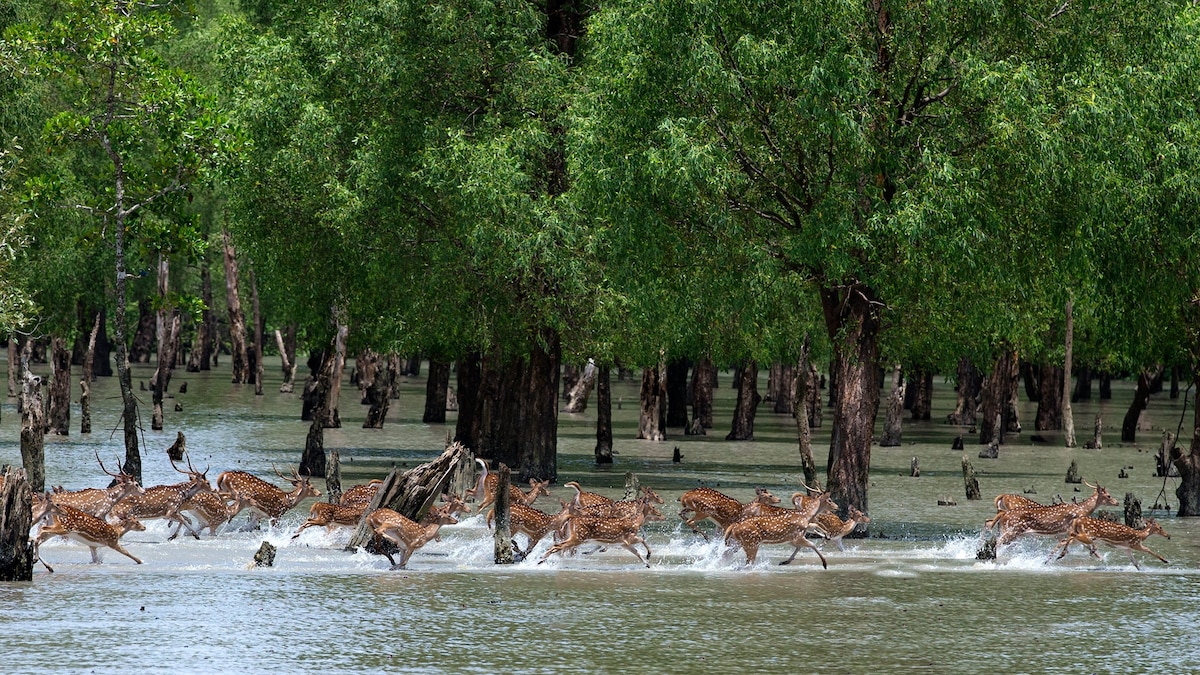Exploring the Enchanting Biodiversity: The Sundarbans Mangrove Forest of Bangladesh

Introduction
Nestled at the confluence of the Ganges, Brahmaputra, and Meghna rivers, the Sundarbans mangrove forest in Bangladesh stands as one of the world’s most captivating and biodiverse ecosystems. This UNESCO World Heritage Site is not just a mesmerizing natural wonder, but also a vital lifeline for countless species and local communities. In this article, we delve into the enchanting realm of the Sundarbans, uncovering its unique features, rich biodiversity, and the challenges it faces.
A Natural Marvel
Spread across approximately 10,000 square kilometers along the southwestern coastline of Bangladesh, the Sundarbans is the largest contiguous mangrove forest on Earth. Named after the dominant “Sundari” trees that grace its landscape, this unique ecosystem is an intricate web of tidal waterways, mudflats, and islands. The forest’s formation is largely shaped by the daily ebb and flow of tides, creating an environment where saltwater and freshwater mingle, and an astounding array of plant and animal life have adapted to thrive.
Biodiversity Abound
The Sundarbans is a haven for biodiversity, hosting a wide range of flora and fauna, many of which are found nowhere else on the planet. From majestic Royal Bengal tigers and estuarine crocodiles to spotted deer, wild boars, and various species of birds, the forest’s inhabitants are incredibly diverse. Notably, the Bengal tiger population here has adapted to an amphibious lifestyle, seamlessly traversing land and water to hunt for prey.
The mangrove ecosystem is a vital breeding ground for marine life, acting as a nursery for fish, crabs, and shrimp. It also supports a variety of plant species, including salt-tolerant mangrove trees like the Sundari, Gewa, and Keora, which have evolved unique strategies to survive in the saline environment.
Environmental Significance
Beyond its visual beauty and diverse inhabitants, the Sundarbans plays a crucial role in protecting the Bangladeshi coastline from natural disasters. The dense mangrove roots act as a buffer against erosion and storm surges, reducing the impact of cyclones and safeguarding the lives and properties of millions of people living in nearby areas.
Moreover, the forest’s capacity to sequester carbon dioxide is of global importance in the fight against climate change. The rich organic material in the sediment helps trap significant amounts of carbon, making the Sundarbans a vital contributor to carbon storage and an important player in mitigating climate change effects.
Challenges and Conservation
Despite its incredible value, the Sundarbans faces numerous challenges that threaten its delicate balance. Climate change-induced sea-level rise, increased salinity, and extreme weather events are altering the forest’s ecosystem dynamics. The expansion of human settlements and agriculture near the forest is also encroaching on its boundaries, leading to habitat loss and increased human-wildlife conflict.
Efforts to conserve the Sundarbans are ongoing. Collaborative initiatives involving local communities, NGOs, and governmental agencies are focused on sustainable resource management, raising awareness, and enforcing stricter regulations to protect this vital ecosystem.
Conclusion
The Sundarbans mangrove forest of Bangladesh stands as a testament to the incredible diversity and resilience of nature. Its unique ecosystem, rich biodiversity, and vital role in safeguarding coastal areas and mitigating climate change effects make it an invaluable treasure. As we navigate the challenges of the 21st century, preserving and protecting the Sundarbans becomes not only a local responsibility but a global imperative – a symbol of our commitment to nurturing and sustaining the planet we call home.

